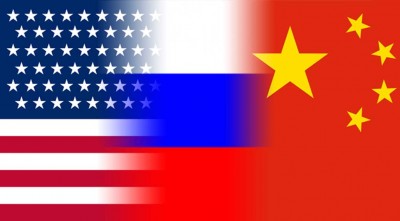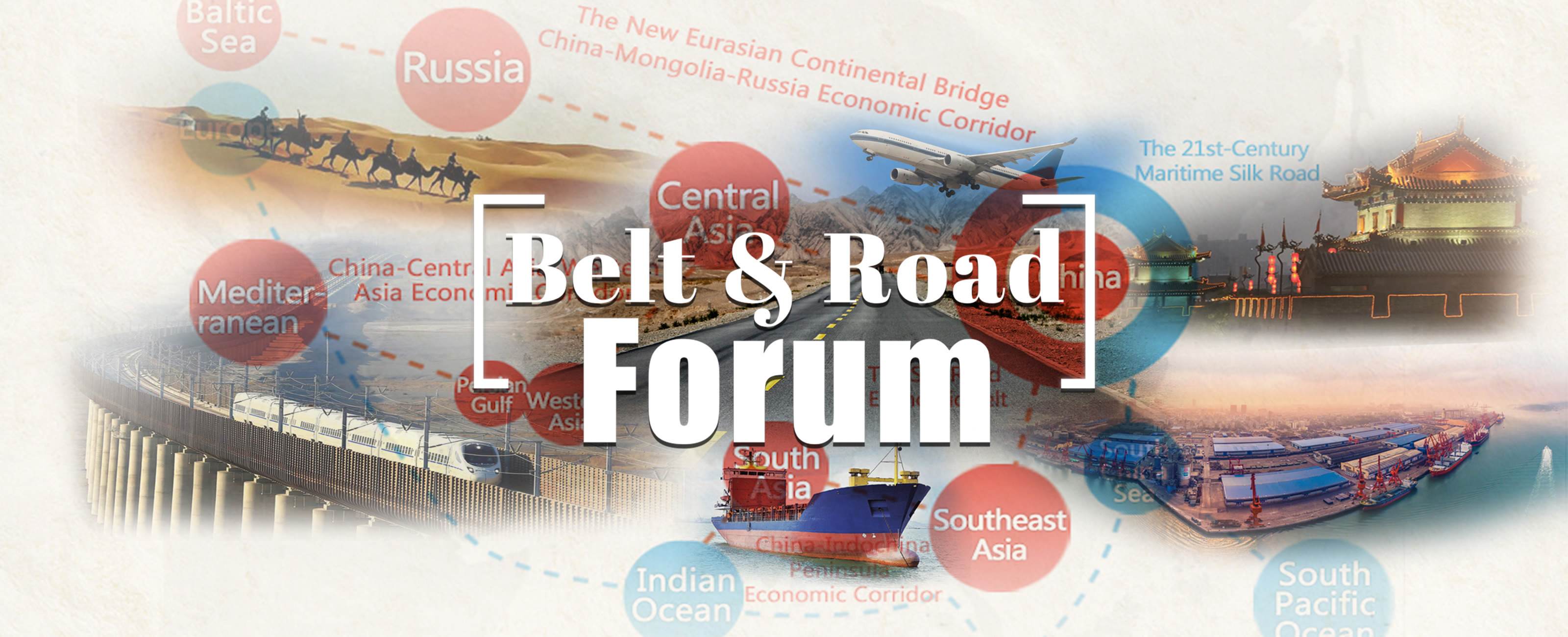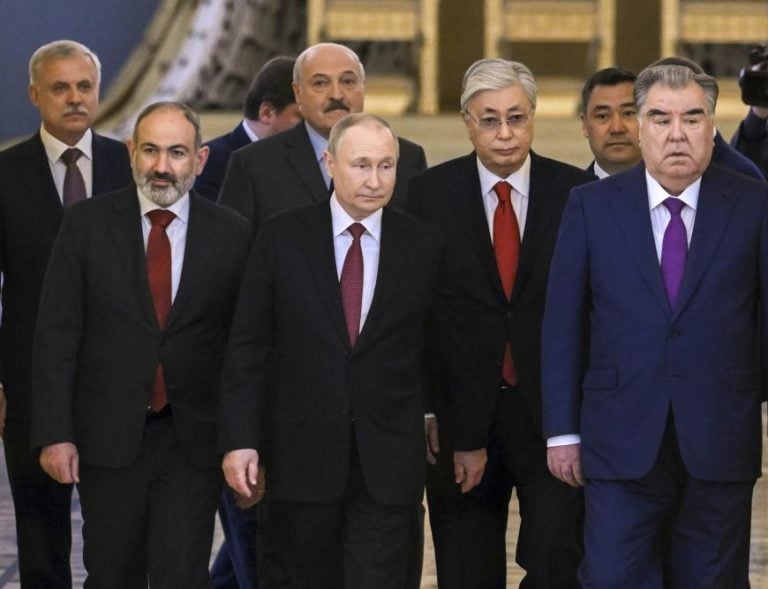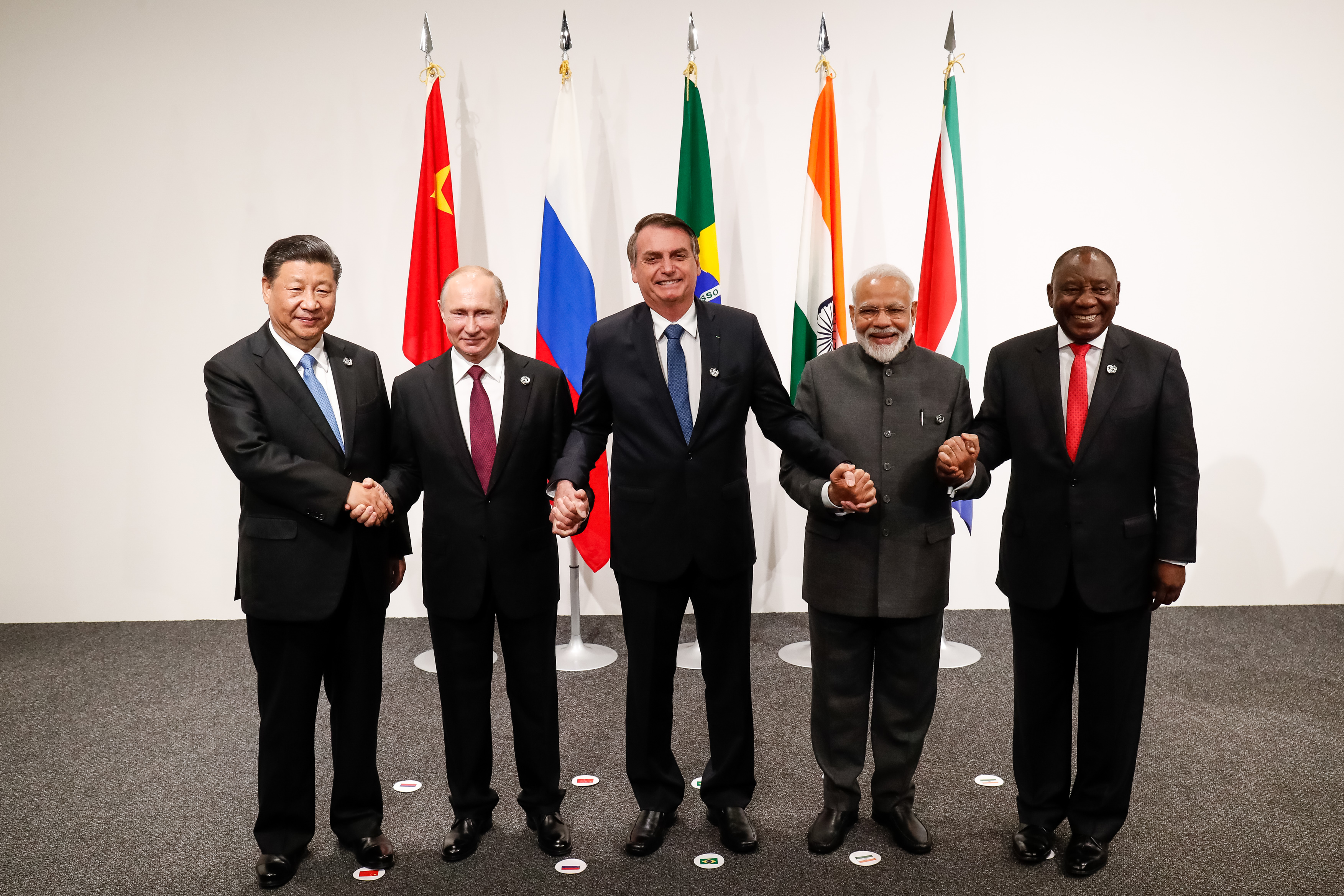Towards a Multi-Polar World? The Russia-China Axis. BRICS PLUS and the CSTO

All Global Research articles can be read in 51 languages by activating the “Translate Website” drop down menu on the top banner of our home page (Desktop version).
To receive Global Research’s Daily Newsletter (selected articles), click here.
Visit and follow us on Instagram, Twitter and Facebook. Feel free to repost and share widely Global Research articles.
***
This article focusses on the debate and search for new possible models by a few countries that are dissatisfied with the unipolar system and the world dominated by the United States.
The United States has outstretched its political and economic interests around the world,
China has similarly and strategically extended its tentacles across both the Atlantic and the Pacific. It has moved south conquering Africa, and intensifying commercial operations in the Central Asia regions including the former Soviet republics – the backyard of the Russian Federation, which still considers itself as a global power.
While still struggling and raising shoulders, many experts say, Russia has little global influence and authoritarian compared to China.
Despite its large population of 1.5 billion which many have considered as an impediment, China’s domestic economic reforms and collaborative strategic diplomacy with external countries have made it attain superpower status over the United States. While United States influence is rapidly fading away, China has indeed taken up both the challenges and unique opportunities to strengthen its position, especially its trade, investment and economic muscles.
Monitoring mainstream news and information reports indicated that Russia has been teaming up with China and India (and that could be interpreted as BRICS platform initiative) and a few other external countries in the process of establishing a new global economic system.
On the other hand, its aim is to break the unipolar system, and defeat American hegemony around the world. Some experts have argued that successive White House administrations have maintained the status quo. Due to socialist economic planning and their advancement of the notions of international cooperation and peace even among states with varying social systems, there has been tremendous progress in the areas of international solidarity.
The Brazil, Russia, India, China and South Africa (BRICS) grouping is a manifestation of the role of Beijing, Moscow and Pretoria along with the other states which have varied in regard to their political orientation in recent years. These new alliances are perceived as a threat to the role of the United States, Britain and the Europen Union since they are not participant-members and cannot directly impact the agendas and goals established by the BRICS.
But a careful study and analysis monitored by this author vividly show that Russia has some limitations. Its external economic footprints are comparatively weak. And its external policies are hardly promoting its economic models.
The geopolitical reordering of the world cannot simply be achieved through war or challenging the West’s political influence in its various global domains. The economic component is possibly the most significant of the ongoing tug of war between Russia and its western detractors.
In the global South for instance, Russia is still struggling to win the hearts of leaders. It however needs a carefully formulated broad public outreach policies to permeate the message of new global order, at least, to the middle class. It has to enlist the understanding of its aims using the communication tools in addition to its own diplomatic statements and globe-throttling juicy rhetoric.
Russia has to invest in all these if it really wanted to succeed in leading the world.
As Dr. Ramzy Baroud, a journalist and the Editor of The Palestine Chronicle, wrote recently
“the Middle East, especially the Gulf region, is vital for the current global economic order and is equally critical for any future reshaping of that order. If Moscow is to succeed in redefining the role of Arab economies vis-à-vis the global economy, it would most likely succeed in ensuring that a multipolar economic world takes form. Russia is clearly invested in a new global economic system, but without isolating itself in the process.”
In the past few months, Russia exited many international organizations, instead of sustaining its membership and using those platforms to propagate its new global mission. Some experts and academics describe Russia making a desperate attempt at reversing the alarming trend in the world’s economic affairs. In order to win this battle, Russia needs a designed geopolitical outreach scheme and strategies for exert economic influence to match its dreams. It has rather gone into self-isolation, with much heavy-handed criticisms against the United States and Europe.
With the rapid geopolitical changes leading to repartitioning and creating a new global order, and Russia, over the course of the last decade, has been desirously strengthening its Greater Eurasian Union alongside with others, such as the Collective Security Treaty Organization (CSTO) and BRICS.
May 2022 Meeting of the CSTO
The Greater Eurasian Union focuses on the economic integration and supporting economic development among the members, and expected to build its structure and method of functions by replicating the European Union.
The CSTO, a military alliance consisting of mostly the former Soviet republics (Russia, Armenia, Kazakhstan, Kyrgyzstan, Tajikistan, and Uzbekistan), and signed the Collective Security Treaty in 1992. Its primary task is to collectively depend the territorial sovereignty of these member states.
The BRICS member countries (Brazil, Russia, India, China and South Africa) collectively represent about 26% of the world’s geographic area and are home to 2.88 billion people, about 42% of the world’s population.
Historically, the first meeting of the group began in St Petersburg in 2005. It was called RIC, which stood for Russia, India and China. Then, Brazil and subsequently South Africa joined later, which is why now it is referred to as BRICS.
Informal Meeting of BRICS, June 2019
South Africa was a late minor addition to the group, to add a “bridgehead to Africa” says Charles Robertson, Chief Economist at Renaissance Capital. All the BRICS countries are facing economic challenges that need addressing urgently. The BRICS is keenly aware of the importance of contributing to Africa’s development agenda.
“So, it could expand because the BRICS are under-represented in the global financial architecture. Europe and the United States dominate institutions like the International Monetary Fund (IMF) and the World Bank, and to some extent many others,” explained Robertson.
According to him,
“Russia and others in the BRICS would like to see larger power centres emerge to offer an alternative to that Western dominated construct. That is reasonable enough – providing there are countries with the money to backstop the new institutions, such as China supporting the BRICS bank, and if the countries offer an alternative vision that provides benefits to new members.”
“Now is a very good time to show that BRICS members and relations between them are an alternative to the format existing in the West,” Executive Director at the Russian National Committee for BRICS Research, Professor Georgy Toloraya, told the Kommersant, a Russian daily business newspaper, adding that “BRICS favours order, compliance with agreements and development.”
Moreover, plans are in store to expand the group to include Argentina, Turkey, Indonesia and some other African countries. According to Toloraya, India is currently opposed to expanding BRICS fearing that new members will support China. On the other hand, Moscow argues that “the entrance ticket” to the group is independence and sovereignty, and under no circumstances, potential candidates be called China’s satellites.
There are not so many countries like that—they would include Indonesia, Mexico, Turkey, Egypt and Iran. But then, there are certain political requirements for new members, including recognition of BRICS values and core foreign policy principles, he said, and added “initially, the goals and tasks were very modest, primarily focusing on the economy and the coordination of efforts toward attaining more ambitious goals.”
What is BRICS Plus and what is the purpose of this new mechanism?
On 19 May, China’s State Councillor and Foreign Minister Wang Yi chaired a videoconference dialogue between foreign ministers of BRICS countries and their counterparts from emerging economies and developing countries. This was the first BRICS Plus dialogue at the level of foreign ministers. Participants in the dialogue came from BRICS countries as well as invited countries such as Kazakhstan, Saudi Arabia, Argentina, Egypt, Indonesia, Nigeria, Senegal, United Arab Emirates and Thailand.
According to Chinese Foreign Minister Wang Yi, the dialogue is of significant importance to further expand cooperation between the BRICS countries and other emerging economies and developing countries.
As a BRICS Plus participant country, Argentina has on several occasions expressed its interest in joining this mechanism. The Argentine president, Alberto Fernández, considered that BRICS represents for Argentina “an excellent alternative for cooperation in the face of a world order that has been working for the benefit of a few.”
Understandably some leaders are advocating for multipolar system. Primarily due to geopolitical tensions, rivalry differences and competition to lead the world, Russia is currently pushing an initiative for creating a group. In June 2022, Russian State Duma (the lower house of parliament) Speaker Vyacheslav Volodin wrote on Telegram that the United States and its allies are destroying economic ties by their sanctions policy, but at the same time creating new points of growth in other countries.
“The move by Washington and its allies to cut the existing economic ties has created new points of growth in the world,” he pointed out. According to the parliament speaker, Western sanctions are leading to the establishment of another group of eight nations – China, India, Russia, Indonesia, Brazil, Mexico, Iran and Turkey – that is 24.4% ahead of the old group of developed countries in terms of Gross Domestic Product (GDP) and purchasing power parity.
“The United States, with its own hands, has created conditions for countries willing to build an equal dialogue and mutually beneficial relations to actually establish a new G-8 group with Russia,” Volodin noted.
Understandably, there is a Group of Seven (G-7), an inter-governmental political forum, that includes highly developed countries. These are Canada, France, Germany, Italy, Japan, the United Kingdom and the United States. In addition, the European Union is a non-enumerated member. Its members are the world’s largest IMF advanced economies and wealthiest liberal democracies.
According to reports, the group is officially organized around shared values of pluralism and representative government. As of 2020, the collective group accounts for over 50 percent of global net wealth (which is US$418 trillion), 32 to 46 percent of global gross domestic product, and approximately 770 million people or 10 percent of the world’s population.
Its members are great powers in global affairs and maintain mutually close political, economic, social, legal, environmental, military, religious, cultural, and diplomatic relations. From 2022, Germany has taken over the rotating presidency of the G-7, following the presidency of the United Kingdom.
Russia dismembered itself from the group. This prompted the U.S. President Donald Trump’s reiteration that Russia should be readmitted to the group, instigation of a trade war with China, increased tensions in Iran, Trump’s alleged reluctance to attend the conference and a number of international crises made the 2019 G-7 meeting in Biarritz, France the most divided since its inception.
Following Trump’s previous rescinding of his signature to a joint communiqué agreed in 2018 due to an alleged slight from Canadian Prime Minister Justin Trudeau, French President Emmanuel Macron agreed that the group would not issue a joint communiqué at the Biarritz conference. Since then, Russia has remained critical about the group, basing its argument that the G-7 has no relevance to exist as there the members meet at Group of Twenty (G-20).
Similarly to the above argument, if the establishment of another new Group of Eight nations – China, India, Russia, Indonesia, Brazil, Mexico, Iran and Turkey – and compared to BRICS – Brazil, Russia, India, China and South Africa, it follows that BRICS will have to be absorbed by the new Group of Eight organization, and thus pushing out South Africa.
Lucio Blanco Pitlo III, a Research Fellow at the Asia-Pacific Pathways to Progress Foundation, argued that the already established BRICS may have better chances of enticing new members. The new members could be Argentina, Egypt, Indonesia, Kazakhstan, Nigeria, United Arab Emirates, Saudi Arabia, Senegal, and Thailand that participated in recent consultations.
In fact, UAE along with Bangladesh and Uruguay became the first expansion members of BRICS’ National Development Bank (NDB), last September. But the timing makes parties cautious. With no permanent secretariat and a fixed hub, at least the NDB fixed its headquarters in Shanghai, and further establish its regional offices in South Africa (Johannesburg).
As the world is facing massive challenges, it also requires international collaboration and cooperative solutions, importantly not to grossly endanger the economic prospects of poor and underdeveloped countries. Here live millions and millions of impoverished population.
Indonesia is hosting the G-20 summit in Bali this November and is doing its best to insulate the meeting from politics. Whether Indonesia is capable to arbitrate between angry clashing superpowers is simply unpredictable. The chances of a sudden rapprochement between the United States and China – let alone between the US and Russia – are exceedingly low.
Russia and China’s strategic alliance is strengthening and China has resisted so many attempts for excluding Russia from international organizations. Both are staunch members of BRICS. On the other hand, China’s push for expanding BRICS’s roster may alleviate external pressures on its relations with Russia and its own actions in disputed spaces with neighbours.
The author of this article has contacted several experts on this question. But for Dr. Pankaj Kumar Jha, an Associate Professor at O. P. Jindal Global University in Sonipat, Haryana, China and India border conflict will continue influencing BRICS. However, India and China are cooperating to develop alternate financial structures, cohesive guidelines within Asia and the global south on many issues such as trade, investment and developing an understanding so that dominance of the of west could be reduced to a minimum in global financial architecture, he said and added, “the foundation of cooperation in BRICS brings potential resources and critical development requirements under one umbrella.”
Questions about the future of BRICS are bound to be there especially when a new world order is being discussed. Drawing inspiration from Quad plus, BRICS countries are also discussing BRICS plus format. The formation of new grouping G-8 is primarily a fusion of BRICS and VISTA (Vietnam, Indonesia, South Africa, Turkey, Argentina). The formation is primarily to connect BRICS to middle income and middle power countries, according his explanation.
Dr. Pankaj Kumar Jha concluded his argument: “This geopolitical configuration is in exploratory phases, undoubtedly meant to bring a new axis of Russia-China but inclusion of Mexico , Indonesia and Turkey has its own strategic baggage. How much successful this grouping would be is still a matter a conjecture. From geopolitical point of view, much would depend on how sanctions on Russia shapes up and the post-coronavirus recovery of China.”
Professor Aslan Abashidze, Head of the Department of International Law of the Russian University of Peoples’ Friendship and Member of the Scientific Advisory Board under the Ministry of Foreign Affairs explained to the author of this article that in general, international associations in the form of international intergovernmental organizations or integration associations emerge on the basis of prerequisites that may be of a different nature: political, defensive, cultural, et cetera.
The emergence of such “para-organizations” as the Group of Seven (G-7), Group of Eight (G-8), Group of Twenty (G-20) is associated with the inability of international institutions of the global level to meet the increased needs of modern development in the face of growing challenges in the form of pandemics, financial crisis et cetera.
The invitation and then exclusion of Russia from the Group of Seven (G-7) and similar unilateral restrictive measures of the “collective” West headed by the United States control all institutions of global control, including the International Monetary Fund and the International Bank for Recontruction and Development, force other states that are not inferior in their raw material, human and intellectual potentials to the United States and the European Union to seek their own development path.
Therefore, it does not matter whether BRICS, or the unification of China, India, Russia, Indonesia, Brazil, Mexico, Iran and Turkey, will be more viable or not. The main thing is that the process of searching for new models by the states dissatisfied with the United States policy has started, which means the end of the dominance of the United States in all spheres of international relations. At some point, the West, headed by the United States, will have to negotiate new models of international economic and other relations, based on new international treaties that ensure equality of all states.
According to Professor Abashidze’s conclusion is that “until this is achieved at the global level, Russia, China and India will establish trade relations on national currencies and therefore it will be attractive and beneficial to other states, not only from the Asia-Pacific region, but also from Latin America, the Middle East and Africa.”
Whether Russia, China and India and a number of countries, there are arguable variations in political, economic and cultural capabilities. Russia’s President Vladimir Putin last year explained in one of his speeches that after the collapse of the Soviet era, Russia has to begin from the scratch. It was the ideological confrontation between the West and the East that gave birth to Soviet era. Lenin spoke about the birthmarks of capitalism, he reminded, and added that “It cannot be said that we have lived these past 30 years in a full-fledged market economy. In fact, we are only gradually building it, and its institutions. Russia had to do it from the ground up, starting from a clean slate. Of course, we are doing this, taking into consideration, developments around the world. After all, after almost one hundred years of a state-planned economy, transitioning to a market economy is not easy.”
On other way round, it is necessary to take a closer look at approach, economic capability and the services by the Chinese. China has such a diverse landscape, with investment and trade around the world. According to the World Bank, China has the largest economy and one of the world’s foremost infrastructural giants. China is the world’s largest exporter and second-largest importer of goods.
China holds 17.7% of the world’s total wealth, the second largest share held by any country. It has the world’s largest banking sector, with assets of $40 trillion and the world’s top 4 largest banks all being in China.
In 2019, China overtook the US as the home to the highest number of rich people in the world, according to the global wealth report by Credit Suisse. It has the highest number of rich people in the world’s top 10% of wealth since 2019. There were 658 Chinese billionaires and 3.5 million millionaires.
 China’s Belt and Road Initiative has expanded significantly over the last six years and, as of April 2020, includes 138 countries and 30 international organizations. Along with Brazil, Russia, India and South Africa, China is a member of the BRICS group of emerging major economies.
China’s Belt and Road Initiative has expanded significantly over the last six years and, as of April 2020, includes 138 countries and 30 international organizations. Along with Brazil, Russia, India and South Africa, China is a member of the BRICS group of emerging major economies.
Nearly all the experts contacted for this article have the arguable points. They acknowledged the fact that the countries seeking multipolar system have to address problems of the less developed world.
In addition, judging from their lengthy discussions, one key factual description is given – the western dominance and imperial approach of the United States. These imperialist endeavors aimed at maintaining the political and economic domination of the world’s population has created enormous difficulties for peoples globally including the working class, nationally oppressed and impoverished living within the western capitalist countries.
The emerging new coalition group is feasible and coming up at the crucial time when over the last two decades, the United States, Britain, the European Union (EU) countries and their allies globally, have been embroiled in numerous imperialist interventions resulting in destabilization, military interventions, proxy wars and the expansion of western imperialism throughout Africa, Asia and Latin America.
*
Note to readers: Please click the share buttons above or below. Follow us on Instagram, Twitter and Facebook. Feel free to repost and share widely Global Research articles.
Kester Kenn Klomegah, who worked previously with Inter Press Service (IPS), is now a regular and passionate contributor to Global Research. As a versatile researcher, he believes that everyone deserves equal access to quality and trustworthy media reports.



